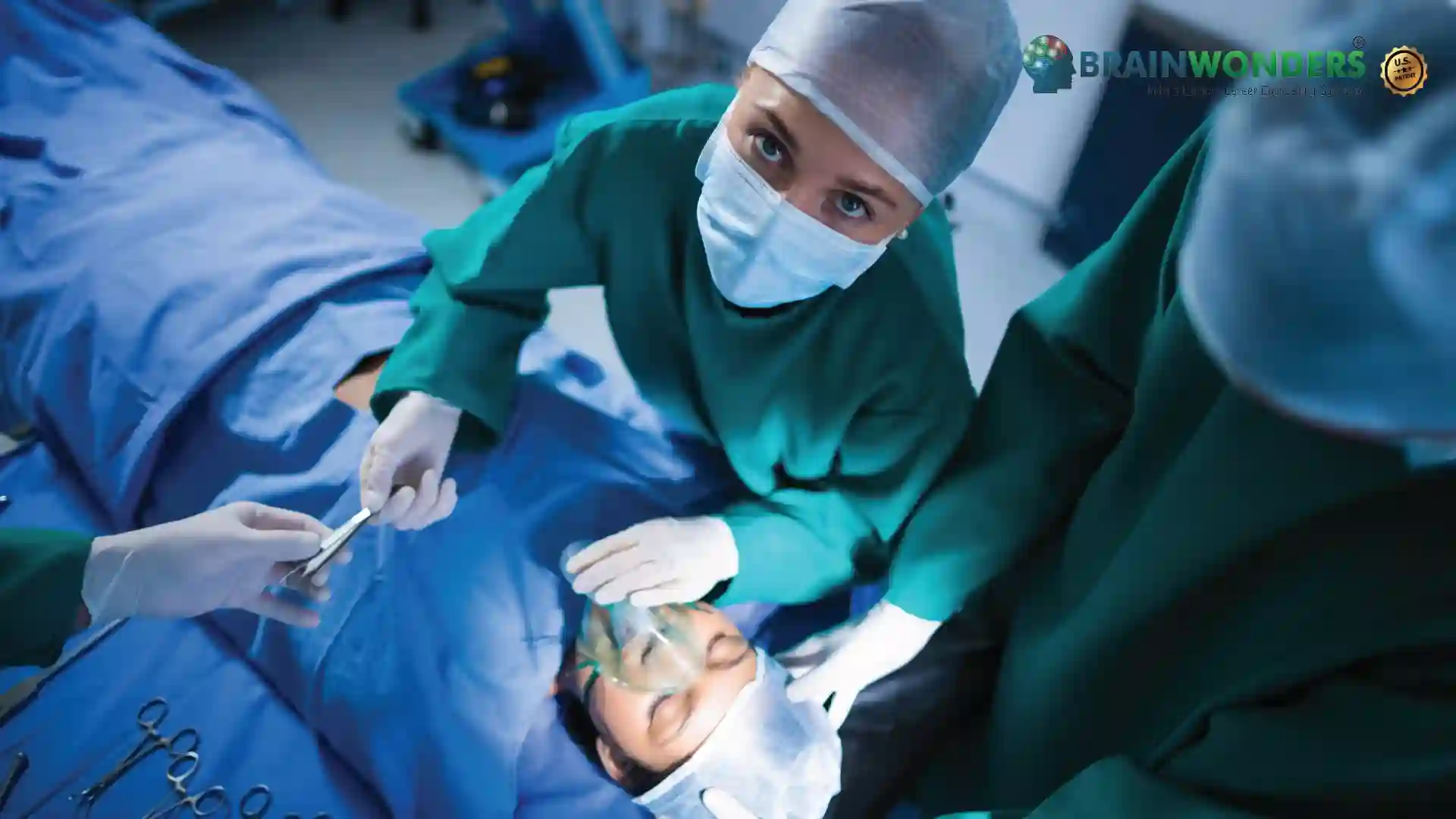How to become an Orthotists and Prosthetist
Overview, Courses, Exam, Colleges, Pathways, Salary

Overview
Who is Orthotists and Prosthetist ?
Orthotists and prosthetists are healthcare professionals who specialize in designing, fabricating, and fitting orthotic and prosthetic devices. These devices support, enhance, or replace missing or impaired body parts to improve mobility, functionality, and quality of life for individuals with physical disabilities or limb differences.
Orthotists focus on orthotics, cqqustom-made devices such as braces, splints, or shoe inserts. These devices are designed to support, align, protect, or correct musculoskeletal structures. Orthotists assess patients' conditions, take measurements, create moulds, and fabricate orthoses to meet individual needs. They also provide ongoing follow-up and adjustments to ensure optimal fit and functionality.
Prosthetists specialize in prosthetics, which are artificial limbs or body parts. Prosthetists evaluate patients' amputation levels, physical abilities, and lifestyle requirements to design and create prosthetic devices. They work closely with patients to ensure the prostheses' proper fit, alignment, and function. Prosthetists also provide training and rehabilitation to help patients adapt to and effectively use their prosthetic limbs.
Orthotists and prosthetists collaborate with physicians, physical therapists, and other healthcare professionals to develop comprehensive treatment plans for their patients. They stay updated with advancements in materials, technology, and techniques to provide the best possible care and improve the quality of life for individuals with limb differences or physical disabilities.
Typical day at work
What does Orthotists and Prosthetist do?
- Assessment and Evaluation: Orthotists and prosthetists assess patients' conditions, considering their medical history, physical abilities, and lifestyle requirements. They evaluate each patient's specific needs and limitations to determine the most appropriate orthotic or prosthetic solution.
- Design and Fabrication: Based on their assessments, orthotics and prosthetists design customised devices tailored to the patient's needs. Orthotists create orthoses, such as braces, splints, or shoe inserts, while prosthetists design prosthetic limbs or body parts. They fabricate these devices using advanced materials and technology, ensuring optimal fit, function, and durability.
- Fitting and Adjustment: Orthotists and prosthetists work closely with patients to fit the orthotic or prosthetic devices. They make necessary adjustments and modifications to ensure proper alignment, comfort, and functionality. Regular follow-up visits allow them to address any issues, make further adjustments, and ensure the ongoing effectiveness of the devices.
- Patient Education and Rehabilitation: Orthotists and prosthetists provide comprehensive education and training to patients on using and maintaining orthotic or prosthetic devices. They guide patients in adapting to their new devices and assist them in regaining or improving their mobility and functionality through rehabilitation programs.
- Collaboration with Healthcare Professionals: Orthotists and prosthetists collaborate with physicians, physical therapists, occupational therapists, and other healthcare professionals to develop coordinated treatment plans. They work as part of a multidisciplinary team, sharing expertise and information to provide comprehensive care and achieve the best outcomes for their patients.
- Stay Updated with Advancements: Orthotists and prosthetists continuously stay updated with the latest advancements in materials, technology, and techniques within their field. They attend conferences, engage in professional development activities, and keep abreast of research and innovations to enhance their knowledge and improve patient care.
Abilities and Aptitude needed
What are the skills, abilities & aptitude needed to become Orthotists and Prosthetist?
- Technical and Mechanical Skills: Orthotists and prosthetists must possess strong technical and mechanical skills to design, fabricate, and adjust orthotic and prosthetic devices. They should be comfortable working with tools, machinery, and various materials to create customized solutions for patients.
- Problem-Solving and Critical Thinking: Orthotists and prosthetists encounter unique challenges when assessing patients and designing devices. They must possess excellent problem-solving and critical thinking skills to analyze patients' needs, consider functional requirements, and develop appropriate orthotic or prosthetic solutions.
- Attention to Detail: Precision and attention to detail are crucial in orthotics and prosthetics. Orthotists and prosthetists must have a keen eye for detail to accurately measure and fit devices, ensure proper alignment, and make precise adjustments to optimize function and comfort.
- Manual Dexterity: The fabrication and fitting of orthotic and prosthetic devices require good manual dexterity. Orthotists and prosthetists should have steady hands and fine motor skills to work with small components, manipulate materials, and make intricate adjustments to devices.
- Communication and Interpersonal Skills: Orthotists and prosthetists interact with patients on a regular basis. Strong communication and interpersonal skills are necessary to establish rapport, effectively understand patients' needs and concerns, and provide clear instructions regarding device use, maintenance, and rehabilitation.
- Empathy and Compassion: Working with individuals with physical disabilities or limb differences requires empathy and compassion. Orthotists and prosthetists should be sensitive to their patients' emotional and physical challenges, providing support, encouragement, and understanding throughout the treatment process.
- Adaptability and Continuous Learning: The field of orthotics and prosthetics is constantly evolving. Orthotists and prosthetists must be adaptable and open to learning new techniques, materials, and technologies. They should engage in continuous professional development to stay updated with advancements in the field.
- Attention to Ethical Standards: Orthotists and prosthetists must adhere to ethical standards in patient care, respecting confidentiality, and ensuring the well-being and safety of their patients. They should demonstrate professionalism and integrity in their interactions with patients, colleagues, and other healthcare professionals.
Salary
Salary for Orthotists and Prosthetist?
Salary of An Orthotists And Prosthetist is as follows :
- Minimum Monthly Salary: Entry-level orthotists and prosthetists can expect a monthly salary ranging from INR 15,000 to INR 25,000. These initial earnings are typical for individuals who have recently completed their orthotics and prosthetics training and are beginning their careers in this field.
- Maximum Monthly Salary: Highly experienced and specialized orthotics and prosthetists with advanced skills, years of service, and roles in technical areas of orthotics and prosthetics may earn anywhere from INR 50,000 to INR 1,00,000 or more per month. Those working with advanced medical technologies, renowned clinics, or specializing in complex patient needs may command higher salaries.
- Annual Salary: The annual salary for entry-level or junior orthotists and prosthetists could range from INR 1,80,000 to INR 3,00,000. As orthotists and prosthetists gain experience, develop expertise in specific patient requirements, and take on leadership roles, their annual income can increase from approximately INR 4,00,000 to INR 8,00,000 or higher.
- Highest Paying Jobs and Scope: Orthotists and prosthetists specializing in advanced technologies, pediatric care, sports rehabilitation, or complex patient cases often enjoy better salary prospects. Those who contribute to innovative treatment plans, collaborate with medical experts, or work on significant patient rehabilitation projects may have enhanced earnings. Orthotists and prosthetists play a vital role in improving patients' quality of life by designing and fitting orthotic and prosthetic devices. With the growing demand for specialized medical care and assistive devices, skilled orthotists and prosthetists are expected to have promising career opportunities. Professionals who excel in patient assessment, device customization, attention to detail, and effective communication will likely experience substantial career growth and advancement in orthotics and prosthetics.
Pathways
How to become an Orthotists and Prosthetist?
Entrance Exam
Entrance Exam for Orthotists and Prosthetist ?
Courses
Which course I can pursue?
Best Colleges
Which are the best colleges to attend to become an Orthotists and Prosthetist?
Industries
Which Industries are open for Orthotists and Prosthetist?
- Orthotic and Prosthetic Clinics: Many orthotists and prosthetists work in specialised orthotic and prosthetic clinics. These clinics focus on providing orthotic and prosthetic services, including assessment, design, fabrication, fitting, and ongoing care for patients requiring orthotic or prosthetic devices.
- Hospitals and Rehabilitation Centers: Orthotists and prosthetists may be employed in hospitals or rehabilitation centres where they collaborate with other healthcare professionals, such as physicians, physical therapists, and occupational therapists. They contribute to multidisciplinary teams that provide comprehensive care to patients needing orthotic or prosthetic interventions.
- Private Practice: Some orthotists and prosthetists establish their private practices, offering orthotic and prosthetic services to patients. This allows them to have more control over their practice and work directly with individuals requiring orthotic or prosthetic devices.
- Research and Development: Orthotists and prosthetists may work in research and development within the orthotics and prosthetics industry. They contribute to developing new materials, technologies, and techniques for orthotic and prosthetic devices. Their expertise helps advance the field and improve patient outcomes.
- Medical Device Companies: Orthotists and prosthetists can find employment opportunities in medical device companies specialising in orthotics and prosthetics. They may be involved in product design, quality control, or sales and marketing of orthotic and prosthetic devices.
- Education and Training: Some orthotists and prosthetists pursue careers in academia and education. They may work as faculty members in orthotic and prosthetic programs, teaching and training future professionals in the field. They contribute to the education and professional development of students interested in orthotics and prosthetics.
internship
Are there internships available for Orthotists and Prosthetist?
- Orthotic and Prosthetic Residency Programs: After completing their formal education, individuals interested in specializing in orthotics and prosthetics can apply for residency programs. These programs typically last for 12-18 months and provide intensive clinical training under the guidance of experienced orthodontists and prosthetists. Residents gain practical experience in patient assessment, device design and fabrication, fitting and adjustments, and patient care management.
- Clinical Internships: Some orthotic and prosthetic clinics or hospitals offer internships for students or recent graduates. These internships allow individuals to work closely with orthotists and prosthetists, observing and assisting in patient care activities, device fabrication, and fitting procedures. It provides hands-on learning and practical exposure to various aspects of orthotics and prosthetics.
- University Programs: Some universities and colleges offering orthotic and prosthetic programs may integrate internship components into their curriculum. These programs facilitate placements in orthotic and prosthetic clinics or healthcare settings, allowing students to gain real-world experience and apply their knowledge in a supervised clinical environment.
- Industry Collaborations: Orthotic and prosthetic companies or medical device manufacturers may offer internship or training opportunities. These collaborations allow individuals to work with professionals in the industry, learn about the latest advancements in orthotic and prosthetic technologies, and gain insight into device development and manufacturing processes.
- Research Internships: Individuals interested in orthotic and prosthetic research can seek internships in academic institutions or research organizations. These internships involve working on ongoing research projects, assisting in data collection and analysis, and contributing to scientific publications or presentations.
Career outlook
What does the future look like for Orthotists and Prosthetist?
The future for orthotists and prosthetists looks promising as advancements in technology and research continue to drive the field forward. Innovations such as 3D printing, advanced materials, and robotics are revolutionizing the design and fabrication of orthotic and prosthetic devices, leading to more personalized and functional solutions. Improved collaboration between healthcare professionals, including orthotists, prosthetists, and therapists, enhances patient outcomes. Additionally, the growing focus on patient-centred care and holistic rehabilitation approaches is expected to further enhance the role of orthotists and prosthetists in improving the quality of life for individuals with physical disabilities.


.webp)


